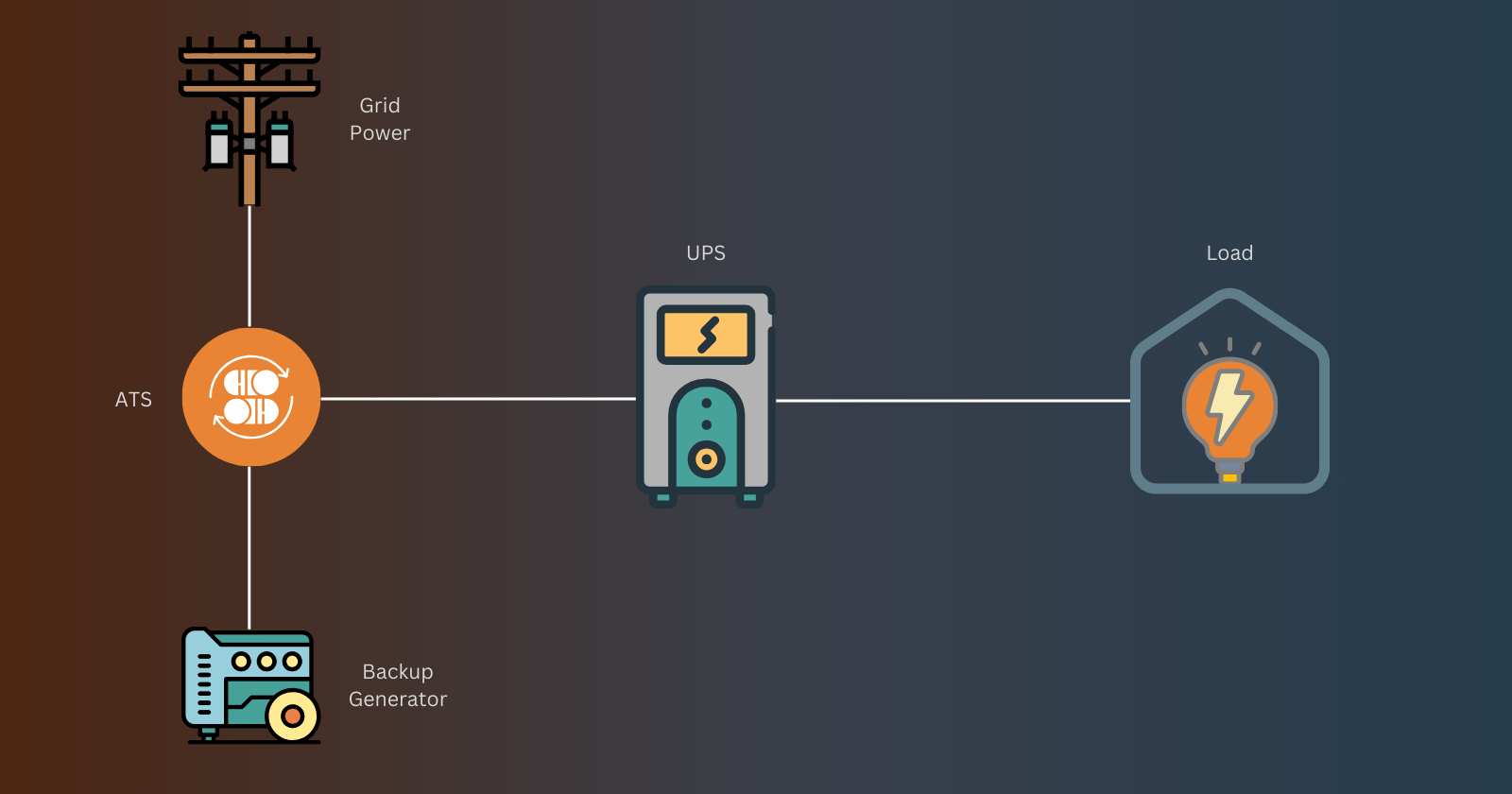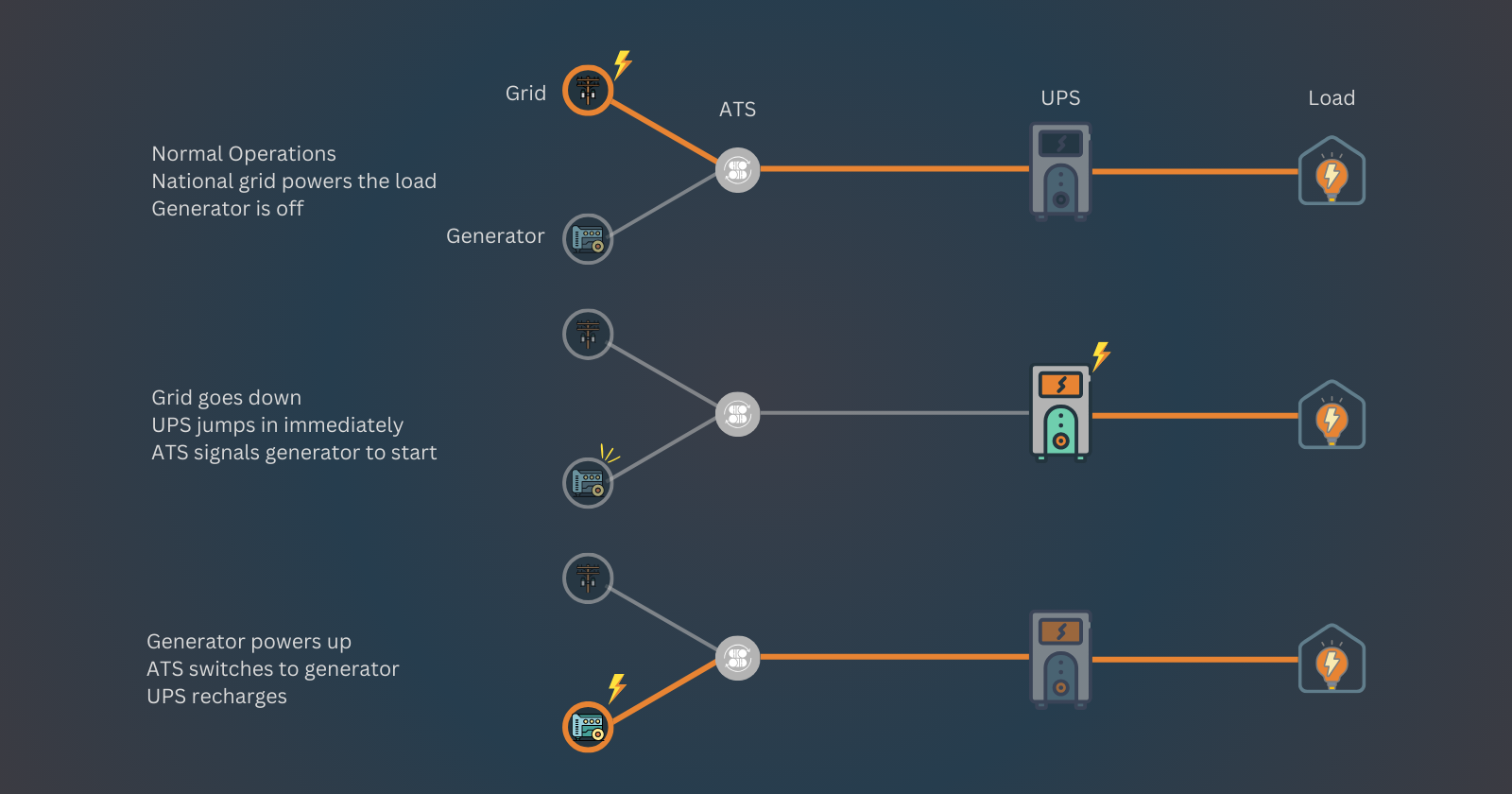Power Supply and Distribution in Call Centers
 Caleb Nyachwaya
Caleb Nyachwaya
In this guide, I’ll walk you through the essentials of how power systems in critical service areas, like call centers, manage outages to keep operations running smoothly. No need to worry! Whether you're new to power infrastructure or simply curious, by the end, it will all make sense.
Picture this: the call center is buzzing with activity, agents are focused, and suddenly, the power goes out. While the agents might secretly cheer for a mini-break, the tech team is scrambling to keep things running smoothly. But with a reliable power setup, the operation continues without a hitch.
Here’s a breakdown of the key components of this power setup and how they work together to keep everything running when the main power fails.
Power Setup Components
National Grid Power: The main power source that keeps your call center running under normal conditions.
Backup Generator: The generator provides power when the national grid fails.
Uninterruptible Power Supply (UPS): Think of this as a safety net. This system jumps in when the power flickers or goes out, ensuring your call center equipment doesn’t shut down.
Automatic Transfer Switch (ATS): The ATS is a smart switch that smoothly shifts power between the national grid and the backup generator, making sure that the UPS always gets power from a steady source.
The ATS is strategically placed between the power sources (national grid and backup generator) and the UPS.
Grid Power Input: The ATS receives power from the national grid as the primary power source.
Generator Power Input: The ATS also has an input connected to the backup generator as the secondary power source.
UPS Connection: The output of the ATS is connected to the UPS. The UPS then feeds the power to the call center equipment.
Now that we’ve covered the layout, let’s look at how these components work together during different scenarios and transitions.
The Power Flow During Outages
Normal Operation
Under normal circumstances, the call center operates using the power provided by the national grid. The UPS stays on standby, ready to intervene if needed. Meanwhile, the backup generator remains off, only coming into action during an outage.
Power Outage
Once the grid power fails, the UPS immediately steps in with batter power, providing temporary power to keep everything running. This seamless transition prevents downtime or any interruption to call center operations.
The ATS then signals the backup generator to start. Once the generator is running and producing stable power, the ATS switches the power from the UPS battery to the generator.
With the generator now providing power, the UPS starts recharging its batteries.
Power Restored
When the national grid power returns, the ATS takes a moment to ensure the grid power is stable before switching from generator power to grid power.
The generator enters a cool-down phase where it continues to run without load for a short period before shutting down.
The UPS returns to standby mode.

The Power Transition in Sle Steps:
Grid goes down → UPS steps in → ATS signals the generator.
Generator powers up → ATS switches to generator → UPS recharges.
Grid comes back → ATS switches back to grid → Generator powers down → UPS returns to standby mode.
UPS Battery Capacity: Make sure the UPS has sufficient battery capacity to keep the call center running for the time it takes the generator to start.
Regular Maintenance: Regularly check and service your UPS, ATS, and backup generator to make sure they’re in good working order. Test them occasionally to confirm they switch power sources smoothly.
Backup Generator Fuel: Ensure your backup generator has enough fuel to last through a power outage. Regularly check fuel levels and keep a plan for refueling if needed.
And there you have it! With these systems and tips in place, your call center will stay powered through anything life throws at it.
Subscribe to my newsletter
Read articles from Caleb Nyachwaya directly inside your inbox. Subscribe to the newsletter, and don't miss out.
Written by
